

ULTIMATE Guide to Planning a Ford Rouge Factory Tour
Michigan has a proud automobile history and the Ford Rouge Factory Tour is one of the best ways to see the state’s rich history and learn about its exciting future up close!
Located in Dearborn as part of the Henry Ford Museum of American Innovation, the factory tour showcases all the things that have made Ford a household name in Michigan and throughout the world. You’ll see a glimpse of the past and you’ll see modern manufacturing in action as current vehicles are designed.
Added all together, it’s a truly immersive experience that visitors of all ages can enjoy. Whether you’re techy and love the technology of tomorrow, or you’re a fan of classic cars, there’s something here for everyone.

A History of Innovation at the River Rouge Plant
The famous Henry Ford had a vision of assembly line construction of cars and it became a reality in 1903 when Ford Motor Company was founded.
By 1906, Ford Motor Co. was the nation’s largest car producer and Ford introduced his famous Model T just two years later.
Construction of the Rouge Plant along the Rouge River in Dearborn started in 1917 and by 1918 the plant was producing boats for the US Navy. During WWII, the Rouge plant was a big contributor in establishing Detroit as America’s ‘Arsenal of Democracy.’
Over time, the plant would also produce tractors, the Model A, the V-8 Ford, the Ford Thunderbird, the Ford Mustang, and even the Ford F-150.
Public tours of the Rouge Plant began in 1924 and they instantly became a hit. In 1965, the plant set a new yearly record with more than 239,000 visits. That number continued to grow until the plant closed for tours in 1980. After the construction of a new, state-of-the-art facility, tours began again in 2004.
What does that mean for you? It means when you take a Ford Rouge Factory Tour you’re experiencing an important and special part of Michigan’s history.

Ford River Rouge Plant Tour FAQs
What is the Ford Rouge Factory Tour?
It’s a self-guided tour broken up into 5 different stations: The Legacy Theater, The Manufacturing Innovation Theater, The Observation Deck Tour, The Assembly Walking Plant Tour, and The Legacy Gallery.
How long does the Ford Rouge Factory Tour take?
If you’re visiting Henry Ford Museum to take the plant tour, plan on it taking a couple of hours. The tours are self-guided, but there’s a lot to see so visitors are encouraged to take their time.
Can you visit the Ford plant?
Yes. It’s open from 9:30 a.m. to 5 p.m. Monday-Sunday and is closed for most major holidays. Tours begin with a short bus ride from the museum to the Ford Rouge Visitor Center.
How many people work at the Ford Rouge plant?
About 6,000 people work as Ford employees at the plant.

Henry Ford: Innovation On The River Rouge
In 2013, Awesome Mitten Creator Team member Jennifer Bowman visited the River Rouge Factory and shared her experience…
On the heels of Henry Ford’s 150th birthday in 2013, I couldn’t help but cook up an outing to Dearborn to commemorate the auto maker’s legacy. Having visited The Henry Ford Museum and Greenfield Village on several occasions, one well-known spot was still foreign territory to me: The Rouge Factory. What better way to celebrate Henry Ford than spending a day at one of his namesake auto plants? As I planned for the afternoon outing, I was excited to find out more about Ford’s legacy and the journey he took to lead the “Big Three” contender to where it is today.

The tour started off at The Henry Ford Museum, where a bus shuttle transported me and several other sightseers across town to the factory site on the Rouge River (prior to this, I had just assumed that the factory was located somewhere on the grounds near the museum and Greenfield village). Upon reaching the factory, we were ushered inside a visitors’ building for a brief introduction, then to a small theater for a documentary on how the Ford Motor Company flourished throughout the 20th century, surviving hard times such as the stock market crash and World War II.
Next, a second theater gave us a look at the start-to-finish process of Ford vehicle manufacturing, complete with multiple screens, special lighting and temperature effects, and movable chairs that rotated 365 degrees for an immersive movie experience. If all of that wasn’t cool enough, the film was set to music performed by the Detroit Symphony Orchestra, further driving the “home-grown” feeling of the Ford plant and its roots in Detroit history. Our third stop was an upstairs viewing deck, where we were surrounded by walls of windows for a better look at the factory grounds. The main attraction here was a view of the factory rooftop, which was carpeted in a layer of mossy plant matter. This design, we were told, worked together with the factory’s vine-covered outer walls to insulate the factory and regulate indoor temperatures year-round. Truly remarkable, actually—a simple, yet innovative way to keep a large, industrial building at a cool 60 degrees throughout every season.

Finally, we made it to the main attraction: the inner workings of the Rouge factory. Set up as an aerial walkway around the top of the factory, the self-guided tour allowed us to view several assembly stages of the Ford F-150, from windshield installation to quality inspection. Everything worked like clockwork—pulleys and gears circulated truck pieces throughout the building while employees manned organized posts, attaching doors, logo hardware, and other essential pieces to the vehicles. It was awe-inspiring to see how many people were actually involved in the production of each vehicle, and the whole thing got me thinking about how my own car was assembled (not by magic, mind you).
In the end, I got a better idea of all that goes into the products we rely on each and every day. It’s difficult to fathom how one man can come up with an idea that spins into a successful business venture, followed by a long line of successors and related innovations that continue to evolve over the years. That success story, however, is exactly what Henry Ford brought to the world—and as a result, the automobile, factory, and environmental technology industries will never be the same.
Taking a Tour of the Ford Rouge Plant
Tours of the Rouge Plant are self-guided, and there’s a lot to explore, including two different theaters and an observation deck where you can see Ford assembly up close.
Soak Up History at the Legacy Theater
Start your self-guided tour at the Legacy Theater. Here, you can watch a roughly 15-minute presentation about the history of the plant and Ford Motor Co.
You’ll see rarely-seen footage from the Henry Ford Museum’s archives and you’ll learn how the plant and Henry Ford’s ideas helped make Michigan the premier spot for car manufacturing.
Learn the Process at the Manufacturing Innovation Theater
The history of Ford Motor Co. is rich with ingenuity and the Innovation Theater allows you to see that innovation up close.
This 10-minute presentation takes visitors on a (visual) ride of the manufacturing process and how the Ford F-150 truck goes from being a concept to being built to hitting the open road. High-quality audio and 3D laser projection make this a really cool experience for visitors of all ages.

See Manufacturing Up Close on the Observation Deck
Once you’ve been through the two theater presentations, you’ll be ready to see the plant in action. You can experience just that by taking an elevator ride up to the observation deck. Here you’ll see the beauty of industry in motion as you watch Ford F-150 being constructed.
If you’re a fan of cars, your eyes will light up in amazement. Believe us, this is a real treat. The plant is where production meets innovation and you can see that all right before your eyes.
You can also get a view of Ford’s Living Roof, an eco-friendly wonder. The rough is made up of tiny plants and collects and filters water to bring down the plant’s energy consumption.
See How Cars Get Made on the Assembly Plant Walking Tour
Have you ever wondered to yourself how cars get made? On the factory tour, you no longer have to wonder because you can see it up close and personal!
The Assembly Plant Walking Tour allows visitors to watch how the Ford-150 truck is made, giving them a bird’s-eye view of where and how the magic happens. From an elevated walkway, you can see how a mix of complex equipment, parts, skilled hands, and robotics work together to build one truck every single minute.
This part of the tour lasts about 30-45 minutes, but if you like building things or seeing them put together, you won’t be able to get enough of this part of the tour.

Marvel at the Awesomeness of the Legacy Gallery
Once you’re seen Ford’s current innovation and the marvels of 21st-century sustainable design, take another trip back in time by visiting the Legacy Gallery. As you’ve read, the plant has been the site of some of the most famous vehicles in Ford’s history and you can see many of them right here.
Take a stroll through the gallery and you’ll see a display that includes a 1929 Model A, a 1949 Coupe, a 1955 Ford Thunderbird, a 1965 Ford Mustang, and of course, a 2015 Ford F-150.
Not only can you see these amazing vehicles, some of which have been immortalized in songs and movies, but you can also learn about their history too at different kiosks throughout the gallery.
The gallery is located right next to the Factory Store gift shop, so stop in and get yourself a memento from your trip.

The River Rouge Factory Tour: A First-Person Perspective
As you’ve read, the River Rouge Factory Tour is fun, educational, and exciting. But don’t just take our word for it. Hayley went on the tour and had great things to say about her experience.
The famed Ford Rouge Factory had been on my to-do list of tours since I first began my journey through Motown. To those of you who, like me, aren’t what you’d call car-buffs and assume that the tour would be somewhat outside of your wheelhouse, allow me to quell those fears. The Ford Rouge Factory tour was thoroughly enjoyable, full of history, fun tidbits, and a behind-the-scenes look at the production and assembly of the F-150.
The first two stops on the tour were theaters. First, in the Legacy Theater, we were taken on a trip back in time through historic footage of the Rouge and the people who were a part of bringing the famed factory to life. One of my favorite factoids from this station was actually imparted before the film began: the guide who introduced the video made it a point to note that all music heard throughout the tour had been composed specifically for the Rouge Factory Tour, and performed by the Detroit Symphony Orchestra. The video in the Legacy Theater was a tale of Henry Ford’s vision and the history of how it was brought to life in the Rouge. The next video, in the Art of Manufacturing Theater, could not have been more different. A multisensory experience depicting the modern-day manufacturing of a Ford automobile, the experience of the Art of Manufacturing Theater was immersive and intense (in a good way), and a great segway into the part of the tour where we were able to observe the factory as it is today.
We first headed to the observation deck. Though we had chosen a less-than-ideal day (to describe the weather in layman’s terms, it was gross) and could not see as far as on a clear day, the bird’s eye view was still impressive. Not only can you see the F-150s as they are tested and shipped, we had a perfect (if not snow-covered) view of the plant’s living roof, the naturalized habitat, solar arrays, and more. From there, we continued to the elevated-walkway tour of the actual assembly plant. Because of shipping delays, the plant was not active on the day we were there. We had a still, quiet picture of the line, almost as if we had hit the “pause” button on the process. Movies and interactive stations throughout the walkways made it easy to understand what you were looking at and capture interesting tidbits on the assembly process.
We wrapped up our day at the Rouge in the Legacy Gallery, where a few of the historic vehicles manufactured at the factory are displayed. We read about and took pictures of classics like the Model A, the V-8, the Thunderbird, the Mustang, and even got to hop in the new and ultra-cool F-150 Raptor. So whether you’re an autophile or couldn’t tell a transmission from a transistor radio, the Ford Rouge Factory Tour is an interesting, informative, and fun journey through one of the Motor City’s most famous automotive hubs.

Plan Your Ford Rouge Factory Tour Today
The Ford Rouge Factory Tour offers the best of all worlds: history, technology, innovation, manufacturing, and cool cars all rolled into one. So if you love all those things, you should book your factory tour today!
Whether you love cars and trucks or not, the factory tour lets you see the fascinating process of how trucks are made. There’s something that’s really cool about seeing how the sausage (or in this case cars) are made. If you’re naturally curious, this is a tour where you’ll see some incredible sights, learn some interesting facts, and have some fun too.
Book your factory tour today and let us know what your favorite part of the tour is.
James Andersen is an award-winning journalist and editor who was born and raised in Metro Detroit but currently resides on the shores of Lake Huron in Alpena, Michigan. When he’s not knee-deep in research or conducting interviews for stories, he can be found fishing, cheering on Detroit sports teams, and spending time with his wife and two dogs.
Leave a Reply Cancel reply
Your email address will not be published. Required fields are marked *
Save my name, email, and website in this browser for the next time I comment.
Ford Rouge Factory Tour
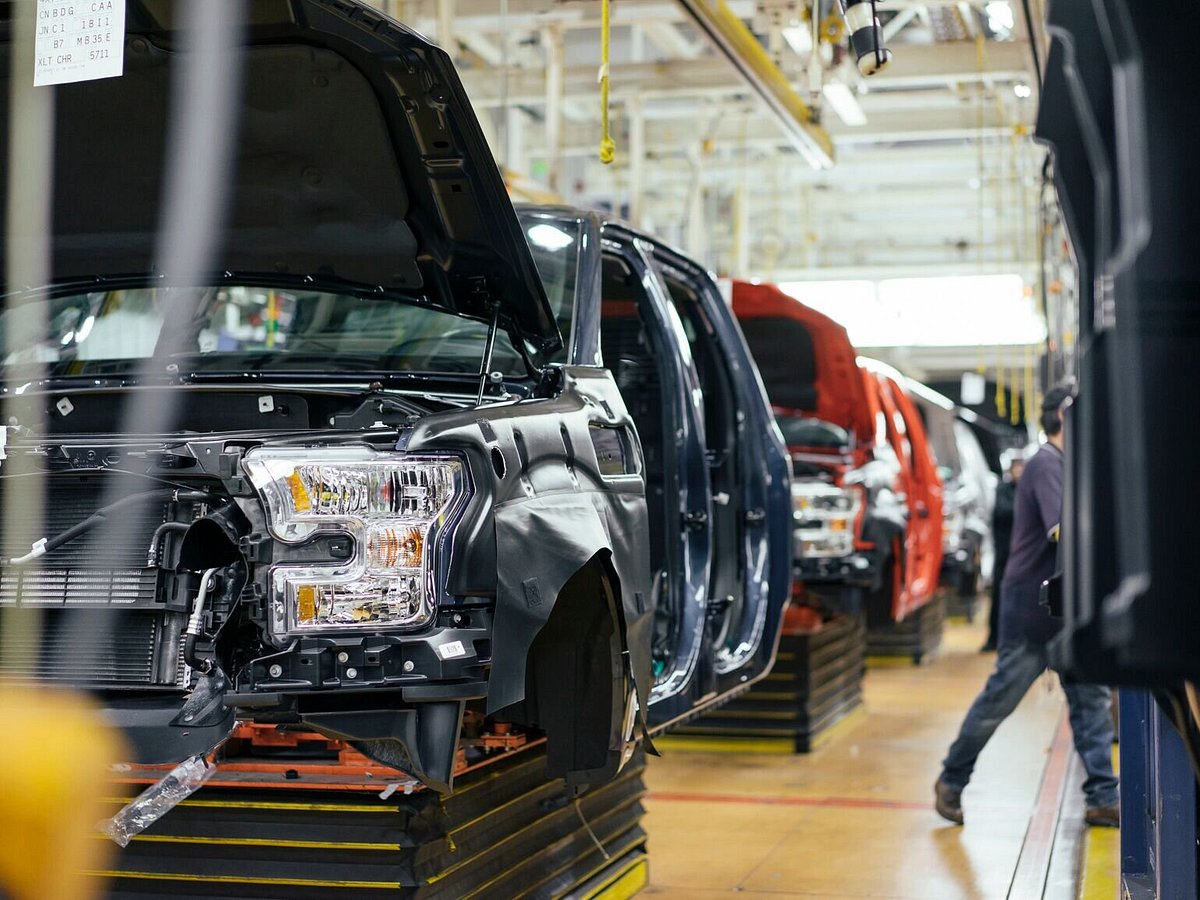
- See all photos
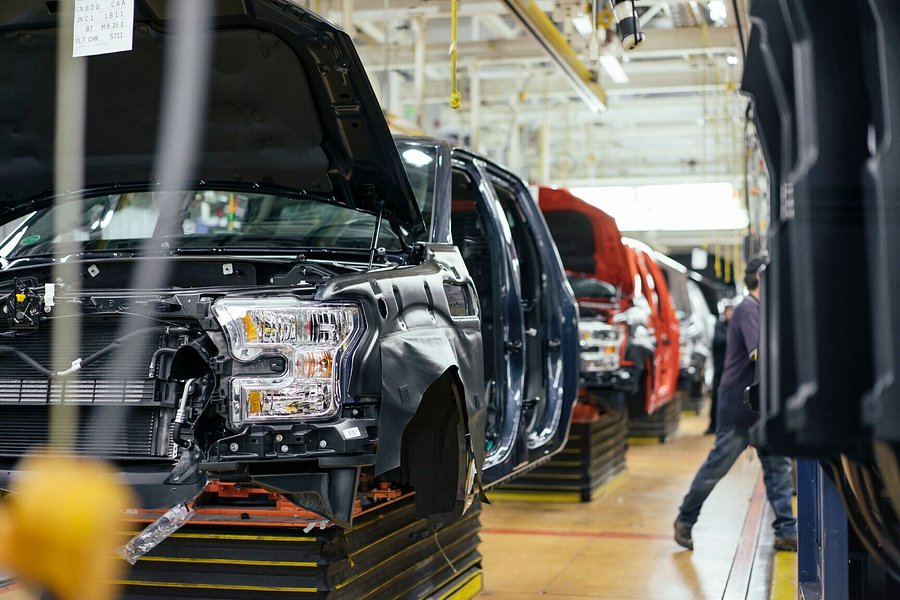
Similar Experiences

Most Recent: Reviews ordered by most recent publish date in descending order.
Detailed Reviews: Reviews ordered by recency and descriptiveness of user-identified themes such as wait time, length of visit, general tips, and location information.
Ford Rouge Factory Tour - All You Need to Know BEFORE You Go (2024)
Customer Viewpoint Ratings and Reviews
Who leaves ratings and reviews?
Ratings and reviews are provided by customers who have either purchased a vehicle or visited a dealership for service.
How are ratings and reviews collected?
Customers are invited to participate in a survey administered by MaritzCX, an independent, third-party supplier.
Can dealerships edit or remove reviews?
No. Ford personnel and/or dealership personnel cannot modify or remove reviews.
Are reviews modified or monitored before being published?
MaritzCX moderates public reviews to ensure they contain content that meet Review guidelines, such as:
‣No Profanity or inappropriate defamatory remarks
‣No Personal Identifying information (e.g., customer phone number or email)
‣No Competitor references (e.g., another brand or dealership)
‣Dangerous behavior (e.g. threatening to harm employees or others)
‣Lack of adequate text (e.g., symbols, emoji’s and random letters)
Reviews on the product and not the customer’s Sales or Service experience
- Electric Vehicles
- Pay my bill
- Update my SYNC
- Replace a Part

Can I get a tour of the Ford Rouge Plant?
The Ford Rouge Factory in Dearborn, Michigan is the only Ford plant that provides an ongoing public tour.
At the Rouge Factory, walk through a real-life truck plant, view one of the world’s largest "living roofs," and see a gallery of iconic Ford vehicles produced at the Rouge. You can also enjoy two exciting theater experiences: a multisensory film about the making of the Ford F-150 truck, filled with jaw-dropping special effects, and a short documentary about the factory’s past, which features rare archival footage. For ticket information, please access the Rouge Plant Tour website or call 313-982-6001 .

Ford River Rouge Complex
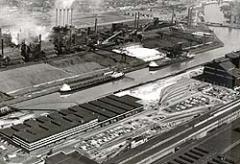
The Ford River Rouge Complex may be the world's most famous auto plant. In 1915 Henry Ford bought 2000 acres along the Rouge River west of Detroit, intending to use the site only to make coke, smelt iron, and build tractors. Over the next dozen years, however, the company turned the Rouge, as it became known, into the most fully integrated car manufacturing facility in the world. By 1927, when Ford shifted its final assembly line from Highland Park to the Rouge, the complex included virtually every element needed to produce a car: blast furnaces, an open hearth mill, a steel rolling mill, a glass plant, a huge power plant and, of course, an assembly line. Ninety miles of railroad track and miles more of conveyor belts connected these facilities, and the result was mass production of unparalleled sophistication and self-sufficiency. "By the mid-1920's," wrote historian David L. Lewis, "the Rouge was easily the greatest industrial domain in the world" and was "without parallel in sheer mechanical efficiency." None of the buildings that comprise this National Historic Landmark have remained unchanged over the years, a reflection of continuing developments in production techniques. Yet many of the complex's most important buildings still stand: the 1917 Dearborn Assembly Plant, still houses the main assembly line; the 1921 Power House continues to supply energy to both the plant and parts of the surrounding community. Today River Rouge turns out a car every few seconds.
Ford Rouge Factory Tour is a self-guided five-part experience that includes: Legacy Theater, Art of Manufacturing Theater, Observation Deck, Dearborn Truck Plant and the Legacy Gallery. Theater seating is limited to 79 guests per show; shows run continuously until 4:00 PM and are seated on a first come first serve basis.
Featured Sites
We hope you enjoy our work..
Please support this magazine of trusted historical writing, now in its 75th year, and the volunteers that sustain it with a donation to American Heritage .
© Copyright 1949-2023 American Heritage Publishing Co . All Rights Reserved. To license content, please contact licenses [at] americanheritage.com.
Thousands of Resources, Ready to help.
- Redevelopment Ready Sites
- Small Business
- Historic Preservation
- Training & Events
- Staff Directory
- Grant Administration Manual

Ford River Rouge Complex

SIGNIFICANCE
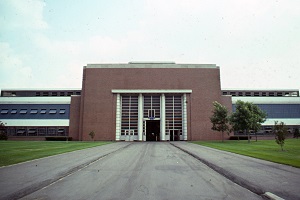
The Rouge was the largest single manufacturing complex in the United States, with peak employment of about 120,000 during World War II. Here Henry Ford achieved self-sufficiency and complete vertical integration in automobile production, a continuous work-flow from iron ore and other raw materials to finished automobiles. The complex included dock facilities, blast furnaces, open-hearth steel mills, foundries, a rolling mill, metal stamping facilities, an engine plant, a glass manufacturing building, a tire plant, and its own powerhouse supplying steam and electricity.
Over the years, the River Rouge complex has been enlarged and modernized. Several of the original Albert Kahn-designed buildings have been demolished or altered as manufacturing needs have changed. A number of significant buildings remain and retain integrity, among them the Stamping Plant, the Engine Plant, the Tool and Die Plant, and the now-closed powerhouse. In addition to these remaining buildings, River Rouge remains worthy because of its unique nature and its vital contributions to improved manufacturing techniques, a legacy carried forward today.
DESIGNATION(S)
- 1976, State Register of Historic Sites
- 1977, Michigan Historical Marker
- 1978, National Historic Landmark
- 1978, National Register of Historic Places
ARCHITECT, BUILDER, OR DESIGNER(S)
- Albert Kahn, architect
SIGNIFICANT DATE(S)
- 1915, Ford Motor Company purchased the land upon which the River Rouge Complex would eventually be built
- 1927, final assembly line was shifted from Highland Park to the River Rouge Complex
- 1927, manufacture of the Model A began
LINKS AND FURTHER READING
- " Ford Rouge Factory Tour ," The Henry Ford
- " History and Timeline of the Rouge ," The Henry Ford
- " Ford's Rouge Assembly Plant Turns 100 ," Assembly Magazine
- " Encyclopedia of Detroit: Ford Rouge Complex ," Detroit Historical Society
- " River Rouge Complex, National Register of Historic Places Inventory – Nomination Form ," National Park Service
- " Rouge Steel Company, Historic American Engineering Record documentation ," Library of Congress
- " Albert Kahn ," Michigan Modern
Mac's Motor City Garage
Auto industry news and gossip + racing + automotive history + technology + shop lore + hot rods + collector cars + daily.

Video: A tour of the Ford River Rouge plant

The film opens with some gee-whiz statistics: 1096 acres. 7,250,000 square feet of plant space. 345 acres of glass windows. 90 miles of railroad track. More than 80,000 workers. Even these fantastic figures fall short of describing the colossal scale of Henry Fords River Rouge plant in Dearborn, MI.
Designed by Albert Kahn and constructed over a period of 11 years from 1917 to 1928, the Rouge plant was the tangible expression of Ford’s personal dream: totally integrated manufacturing. In theory at least, raw ore, minerals, rubber, and timber would arrive at one end of the giant complex, and completed Ford automobiles would drive out the other. It never quite worked out that way, but when this film was made in 1938, the process came impressively close.

The familiar voice belongs to Lowell Thomas, the famed world traveler, journalist, and broadcaster. There are great moments throughout the film, but a few worth mentioning are the block casting process–utterly mesmerizing–at five minutes in, a fabulous look at flathead V8 engine assembly at around 20 minutes, and brand new Ford automobiles loaded onto carriers for transport at 29 minutes, as the film draws to a close. By the way, the Ford Rouge plant is still in operation today, but in much different form than shown here. Enjoy the movie.
Share this:
9 thoughts on “ video: a tour of the ford river rouge plant ”.
Great video…..I wonder how many men were un-normally employed!
I saw that too. This being 1938, I believe the phrase was their way of saying that the employment numbers were fairly unstable.
Amazing!! Thank you!
A great movie. Thanks for showing it to us.
Very few car assembly plants have an engine assembly plant on site, fewer still would have a foundry on site. But to have a rolling mill, steel works, coke plant and glass plant is an undertaking of immense proportions.
In the early 70’s, as part of high school shop class, we had a field trip to a GM assembly plant. While it was 30 some years later than the above film, the labor required, not to mention the monotony of doing the same thing hundreds of times per shift, was enough to convince me to get some education and avoid that line of work. While still maintaining my blue collar roots, I have managed to avoid production line work so far. And in my late 50’s now, I don’t plan to start.
Kudos to those who build the vehicles we so desire, but I would rather live in van down by the river.
live in A van. Stupid fingers.
To all the people who say assembly line workers don’t earn their wages, I say try it.
Too right! $35 an hour ,+++ sounds about right. It’s not just the mind-numbing work it’s often the people you work directly under… the up-start manager types. Awful work, I do hope it’s getting better tho
Simply amazing. The complexity of not only the production, but also of the machines used in the production process. It’s very easy to see why there was so many little differences in cars produced in the pre-computer, pre-robotics age. To think of standing in one spot for a shift in the heat and noise, doing the same thing over and over all day long, it’s easy to see why injuries and death were so common on production lines like these. Each process was repeated countless times each day, and with so many of the things being done by hand held tooling, a weld here missed, a bolt left loose, was probably the norm instead of the exception.
Ole Henry had a dream, take the best in raw materials and produce the best in automobiles, and I think for the most part he succeeded. It’s too bad now that production and income have over ridden the desire to have the best at the lowest pricing to attract repeat customers.
Comments are closed.

- The Detroit Historical Society
- Online Resources
- Our Museums
- Board of Trustees
- Annual Reports & Financials
- Detroit 67 Project
- Careers at the Society
- How To Contact Us
- Plan Your Visit
- Museum Events
- Exhibitions
- Detroit River Watch Webcam
- Lectures & Films
- Events By Month
- Partnership Programs
- Behind The Scenes Tours
- Historic Houses of Worship Tours
- Special Events
- All Society Events
- About The Collections
- Artifact Donation
- Finding Aids
- Research Resources And Loans
- Educator Portal
Encyclopedia Of Detroit
- Timeline of Detroit
- Speakers Bureau
- Book Tower Historic Exhibition
- 100 Years 100 Stories
- History X Design Tour
- About Membership
- Membership Levels
- Membership Plus
- Member Login
- Corporate Giving
- Planned Giving
- Sponsorship
- Cobblestone Circle
- Gifts in Honor and Memory
- Matching Gifts
- Volunteering
- Ford Rouge Complex
- Learning Resources
- Class Outreach
- Trips & Programs
- Untold Detroit: Beer | Episode 1
- Untold Detroit: Beer | Episode 2
- Untold Detroit: Beer | Episode 3
- Untold Detroit: Beer | Episode 4
- Untold Detroit: Beer | Episode 5
- Untold Detroit: Beer | Episode 6
- Behind the Scenes
- Centennial Celebration
- From the Collection
Henry Ford ’s vision of a perfect industrial complex was realized with the construction of the Rouge Assembly Plant, or the Ford Rouge Complex, on 2,000 acres in Dearborn, Michigan. Ford hired noted architect Albert Kahn to design the Rouge’s buildings, with construction beginning in 1918. Kahn’s Glass Plant at the Rouge, now gone, is one of his most heralded industrial architectural designs. By the time the complex was completed in 1928, it contained 93 buildings and utilized its own railway system with more than 90 miles of track to distribute parts to buildings on its campus.
Ford’s plan for a self-contained production system, to create vehicles beginning with the raw materials to the final product that rolled off the assembly line, required that a portion of the Rouge River be dredged and widened to allow ore freighters to enter. The plant was one of the few to have its own foundry and coke ovens. With the goal of eliminating waste, residue from the blast furnaces went into a cement factory and a paper mill built nearby made cardboard boxes from scrap wood.
Henry Ford’s obsession with efficiency spilled over into other areas of the plant’s operation, including its cleanliness. At the peak of its employment, the plant employed more than 5,000 workers just to keep the grounds and buildings clean, painted and well-maintained. Between 1919 and 1926 the total number of employees was 75,000.
In 1937 the property was the site of the infamous Battle of the Overpass when Walter Reuther and other union organizers were met and beaten by Henry Ford’s strongman Harry Bennett and his men.
Over time the Ford Company started to relinquish some of the businesses and operations that sustained the all-inclusive operation, such as the ore mines and timberland in Michigan’s Upper Peninsula, and the steel-making, giving up River Rouge frontage and other land in the process. As of 2018, the plant sits on 600 acres with about 6,000 employees.
During its lifetime, the Rouge complex has turned out many of Ford’s most signature products, most notably the Ford Mustang and the iconic 1954 two-seater Thunderbird. During World War I, the plant churned out Eagle Boats for the U.S. Navy, an inaugural project for the plant in 1918. The Rouge plant made parts for Ford’s Model T , but the cars were assembled at the Highland Park plant .
The Ford Rouge is immortalized in Diego Rivera’s “Detroit Industry” mural at the Detroit Institute of Arts (DIA). In 1931 Rivera visited the Rouge for a month to study its machines and workers in order to represent them on the walls of the DIA, a project paid for by Edsel Ford .
At the beginning of the 21st century, the Ford Motor Company embarked on a $2 million project to transform the Rouge complex into a plant featuring lean, sustainable and flexible manufacturing processes. The new complex, now called the Ford Rouge Center, boasts one of the world’s largest living roofs. The Henry Ford offers daily tours of the Center to the public through its Rouge Factory tours.
RELATED ITEMS IN THE COLLECTION

View all items related to the Ford Rouge Complex
- About This Site

© 2024 Detroit Historical Society. All Rights Reserved. | 5401 Woodward, Detroit, MI 48202
- Centennial History
- Centennial Programs & Events
- Signature Centennial Exhibitions
- Detroit Historical Museum
- Dossin Great Lakes Museum
- Remembering Marlowe Stoudamire
- A Tribute to Joseph L. Hudson, Jr.
- Production Guidelines
- DHS Image Library
- Contact P.R.
- From the President & CEO
- Visit Safely
- Accessibility
- School Tours & Programs
- Admissions F.A.Q.s
- Group Tours & Programs
- Events Listing
- Signature Exhibitions
- Changing Exhibitions
- Traveling Exhibitions
- General Information & Pricing
- Approved Caterers & Vendors
- Event Images
- Sample Floor Plans
- Submit an Event Inquiry
- Advisors & Sponsors
- General Information
- Outdoor Enhancement Project
- Virtual Exhibitions
- Themed Lessons
- High School Research Project
- Annual Support
- General Donation
- Honorary Gift
- Memorial Gift
- Volunteer Information
- Docent Information
- Internship Information
- Volunteer Resource Center
- Remembering Mac McAdam
Ford River Rouge Plant Ford River Rouge Plant
The Ford Motor Company made the shift from multi-story to single-story branch assembly plants in the early 1920s following the huge River Rouge plant development in the Detroit area. Located in Dearborn, the new plant had several advantages over Highland Park , which was fast becoming inadequate during the late 1910s. The undeveloped site along the Rouge River was vast, which would allow for continuing expansion. The river would afford Ford the option of shipping materials to the plant by water as well as by rail. The potential of the site inspired Henry Ford and his engineers to think big, so they planned a new facility that would allow the company to start with raw materials and make nearly everything needed to assemble new cars. The Rouge plant would receive iron ore, coal, and limestone to smelt iron and then make steel. It would receive raw rubber and make tires. Building a new plant at the Rouge site also allowed the company to construct factory buildings designed by Albert Kahn to accommodate flows of materials and parts through the processes of fabrication and assembly newly configured according to the engineers' experiences in fine-tuning the processes at Highland Park. Construction began in 1918, portions of the plant began operating in early 1920, and by November the River Rouge assembly line was rolling out 800 cars per day. The Rouge plant became the next of Henry Ford's marvels as it produced finished cars as well as millions of parts to be shipped to the company's network of branch assembly plants
This plant was the first step intended to realize the company policy to "manufacture near the source of supply and assemble near the point of distribution." The system may be summarized as follows: The River Rouge plant received raw materials, many of which, like iron ore, coal, and limestone, came from the Great Lakes region. The Rouge plant had its own blast furnaces for smelting iron ore and its own coking ovens, which were also necessary for smelting iron. The foundry at the plant, said to be the world's largest, was close enough to the blast furnaces that the molten iron produced could be cast into such components as engine blocks without reheating. Additional departments stamped body parts from sheet steel, fashioned other parts of wood, and made glass from sand and then rolled the glass into sheets for windows and windshields. Ford still used the Highland Park plant to manufacture certain components, like radiators, Fordite (a hard rubber composition used for making steering wheel rims), roller bearings, textiles for upholstery, and batteries. All those parts and components were either sent to the "B" Building at the Rouge plant or were shipped throughout the network of thirty-one branch plants to be assembled into finished autos. During the course of a year, the Ford Motor Company used more than 500,000 freight cars to ship materials and parts and accrued about $150,000,000 in transportation costs.
With the River Rouge plant operating, the Ford Motor Company turned its attention to up-grading its network of branch assembly plants, replacing many of the old multi-story facilities with new one-story structures, again designed by Albert Kahn. The New Orleans assembly plant that opened in 1923 was the first of this new generation of branch plants.
- River Rouge Home
- Site Description
- Aerial Photo
- Glass Plant
- Power House
- Blast Furnaces
- Other Buildings
- B Building Pictures
Site Search
Search our website to find what you’re looking for.
Select Your Language
You can select the language displayed on our website. Click the drop-down menu below and make your selection.
Ford Rouge
Tips & policies, plan ahead: learn more about our updated venue operations & safety protocols. learn more, general information.
- What is the Ford Rouge Factory Tour?
- When is the Ford Rouge Factory Tour open?
- Can I drive directly to the Rouge in my own vehicle?
- How early should I be at the bus stop?
- Is photography permitted on the tour?
- Are there places to eat at the Rouge?
- Do you need a Henry Ford Museum of American Innovation admission to go on the Ford Rouge Factory Tour?
- How long does it take to see all the attractions on the Ford Rouge Factory Tour?
- Do you need advanced reservations for the Ford Rouge Factory Tour?
- How do I find out what special events are happening during my Ford Rouge Factory Tour?
- Are pets allowed at the Rouge?
Accessibility
- What do I need to know about accessiblity at Ford Rouge Factory Tour?
Assembly Line Production Information
- Will I see production on the Ford Rouge Factory Tour?
- What will I see when final assembly is in production?
- What's My Car Worth?
- Buyer's Guide
Ford's River Rouge Plant Celebrates a Century of Nonstop Production
Through war, union-management fisticuffs, financial downturns, and more, the Rouge has never stopped humming.

The complex was built on land that was part of a 2000-acre tract along the River Rouge that Ford purchased in 1915. The property's fate was determined in 1917 when Franklin D. Roosevelt, then Undersecretary of the U.S. Navy, made a deal with Ford to produce Eagle-class patrol boats to hunt German submarines. World War I ended soon after the first Eagle boats rolled off the line in 1918, but one legacy of it was the widening of the Rouge River, which made it possible for ore freighters to travel farther up the river.

Ore to Assembly
With the delivery system in now place, the first iron-ore oven went online in October of 1919. This was the largest facility of its type in the world at the time. The electricity plant came online in 1920, and blast furnaces were added in 1920 and 1922. Glass production came online in 1923, and steelmaking furnaces and rolling mills were added in 1926, at which point the Rouge was producing virtually every component needed to assemble a Model T. Despite this, final assembly for the Model T remained at Ford's Highland Park plant. The honor for the first vehicle produced entirely at the Rouge goes to the Fordson tractor. Finally, by the time of the 1927 Model A's debut, Ford's dream of an "ore-to assembly" facility had come true. By 1929, there were 103,000 employees working at the facility, and the Rouge had its own multi-station fire department, a police force, and a fully staffed hospital. A car a minute was rolling off the plant's assembly line.

Ford’s penchant for ruling over his empire like he was playing with a life-size model train layout is well known, and the constant striving for efficiency and cost-cutting during the Depression began to take a human toll. Tensions peaked in May 1937 when a group of union organizers, led by Walter Reuther, were assaulted by Ford's security detail and members of his group of hired henchmen as they tried to hand out union literature at the plant. (Reuther would go on to be president of the United Auto Workers from 1946 to 1970.) Ford settled, and the Rouge cranked out Jeeps and engines for tanks and planes for the war effort.
Civilian production restarted in 1945; Henry Ford died in 1947. That same year, Ford F-150 production started, and the highly successful Mustang came online in 1964; the Mercury Cougar joined in 1966. Mercury Capri production began in 1979, when it was switched from the Euro-based model to become a near clone of the Fox-body Mustang. But the Rouge's belching smokestacks, once a sign of progress and a healthy economy, started to be less attractive to a more environmentally aware public later in the century. In part because of the rise of a strong middle class, a development that likely would not have been possible without the precedent-setting wages Ford, General Motors, and Chrysler paid for both skilled and unskilled labor, the public entered a new age of concern about health and the environment and began to press the government to regulate industrial pollution.
To adapt, Ford began divesting itself from mining, lumbering, and glassmaking operations, finally selling the Rouge's steel foundry to Rouge Steel in 1989. The sale included all of the river frontage and docks as well as about 45 percent of the original 2000 acres. The Rouge continued but at a very different pace from its glory years.
Things began looking up in 1997, however, when Ford and the UAW made agreements to modernize the Rouge, including an environmentally advanced paint shop and an entirely new power plant utilizing the latest advances in technology. Unfortunately, an explosion of the number-six boiler in 1999 killed six workers, marring the rebirth with tragedy.
Today, the Rouge stands as an example of moving forward while honoring the past, a modern efficient facility featuring a 10.4-acre Living Roof, numerous wetlands and vegetated ditches called swales, hundreds of newly planted trees, and the world's largest porous pavement lot. Home to the Dearborn Truck Plant where the popular F-150 pickup has been made since 2004, the facility is designed to minimize waste at all stages. It employs extensive recycling procedures including the capture of paint-shop waste gases that are turned into fuel cells to help power the plant.
The Rouge was added to the National Register of Historic Places in June of 1978 and now offers a popular tour . With the much ballyhooed Detroit renaissance still in full swing, we expect the Rouge's reign to continue unabated.

Andrew Wendler brings decades of wrenching, writing, and editorial experience with numerous outlets to Car and Driver . His work has appeared in numerous publications, including Car and Driver, Esquire, Forbes, Hot Rod, Motor Trend, MPH, MSN, and Popular Mechanics, among others. A Rust Belt native and tireless supporter of the region, he grew up immersed in automotive, marine, and aviation culture. A lifetime of hands-on experience and a healthy dose of skepticism provide him the tools to deliver honest and informative news, reviews, and editorial perspective. Of note, he once won a $5 bet by walking the entire length of the elevated People Mover up track that encircles downtown Detroit.

.css-190qir1:before{background-color:#000000;color:#fff;left:0;width:50%;border:0 solid transparent;bottom:48%;height:0.125rem;content:'';position:absolute;z-index:-10;} News .css-188buow:after{background-color:#000000;color:#fff;right:0;width:50%;border:0 solid transparent;bottom:48%;height:0.125rem;content:'';position:absolute;z-index:-10;}

Bentayga Becomes First Bentley with Black Badges

2025 Kia K5 EX Sedan Receives a $5000 Price Hike
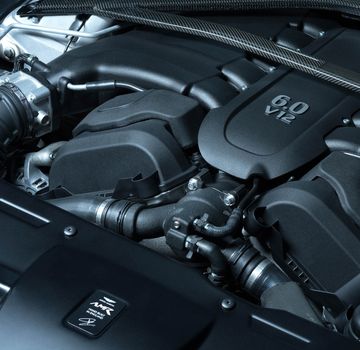
Aston Martin to Continue Selling Gas-Engined Cars

Join Us on May 8 at VIR—Now $200 Off

Kia Starts Truckin' Around with First-Ever Tasman

2025 GMC Yukon AT4 Shows New Front End in Teaser

631-HP Lamborghini Huracán STJ Is an Epic Finale

Rimac and BMW Take On the Electric Future Together

Alfa Romeo Milano SUV Is The Brand's First EV
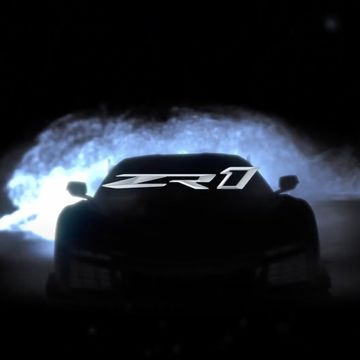
2025 Corvette ZR1 Teased Ahead of Summer Reveal

2025 Mercedes-Benz EQS Debuts New Look, More Range
EPA kicks off Rouge River dredging project around Zug Island
The U.S. Environmental Protection Agency kicked off an $84 million dredging project in the lower Rouge River around Zug Island this month, aiming to remove the pollution that makes the Rouge one of the most toxic sites in the Great Lakes .
The sediments in the Lower Rouge River Old Channel are contaminated with heavy metals; polychlorinated biphenyls, known as PCBs; and polynuclear aromatic hydrocarbons, or PAHs. Those dangerous compounds get into the food web and ultimately fish, which cause health officials to limit the number of fish they recommend people eat from the Rouge and Detroit rivers.
Most of the project funding, $51 million, comes from the Great Lakes Restoration Initiative and Great Lakes Legacy Act, federal programs designed to restore the lakes' environments and accelerate the remediation of contaminated sediment, respectively.
The rest of the funding is from non-federal sponsors, namely North Carolina-based Honeywell, which acquired companies that operated a coking plant, chemical plant and a coal tar plant in the early 20th century. The company spent approximately $28 million on a 2,440-foot sheet pile wall to stabilize the riverbank on the lower Rouge River.
More: Purging the Detroit, Rouge rivers of polluted sediment comes with a hefty price tag
Contaminated sediment plagues much of the Detroit River shoreline from Detroit downstream, where industry took hold long before the Clean Water Act established federal water quality protections in 1972. Oil spills, sewage overflows and industrial discharges poured contaminants into the water, some of which remain in polluted sediment and circulate in the ecosystem.
The Detroit and Rouge rivers both are Areas of Concern (AOC), the designation for Great Lakes sites that Canada and the U.S. both consider significantly impaired by human activity. The EPA announced an aggressive goal of cleaning all of the 25 remaining AOCs by 2030.
Community groups as well as state and federal cleanup workers say the goal presents an enormous challenge, particularly in finding private partners to help fund the work .
The cleanup project in the .75-mile stretch of Old Channel is years in the works. The first phase concluded in 2017, and involved stabilizing the shoreline which threatened to fail during dredging and construction. Still, dredging was paused in 2018 "to address unanticipated site conditions including potential shoreline stability concerns."
Dredging restarted this month. Contractors are conducting site planning. The project is anticipated to be finished in 2025. The EPA anticipates removing 70,000 cubic yards of contaminated sediment over 10 acres and will cap another 35,000 cubic yards of contaminated sediment.
The Army Corps of Engineers is overseeing the 2024 construction season.
U.S. Sens. Debbie Stabenow and Gary Peters cheered the EPA's funding announcement and the use of Great Lakes Restoration Initiative funds. More than $1.4 billion in habitat restoration, research and cleanup projects have been doled out through the GLRI since 2010.
"The Great Lakes are more than just a vital resource for our state, they are simply part of who we are as Michiganders," Peters said in a statement. "It’s critical that we continue to protect them for future generations. I am pleased that funding I helped secure in the Great Lakes Restoration Initiative is coming to Michigan to help further strengthen our waterways and habitats."
Stabenow described the GLRI, which she worked on at its inception, as "a proven success story."
"This is another example of how this initiative is working in our communities to improve the health of our waters and keep our communities safe," she said.

IMAGES
COMMENTS
Ford Rouge Factory Tour is an experience housed within Ford Motor Company's Dearborn Truck Plant in partnership with The Henry Ford and the United Auto Workers union. The Dearborn Truck Plant is a real working factory. As a result, there are many factors that can cause inconsistent active assembly hours. This includes vehicle demand, supply ...
Construction of the Rouge Plant along the Rouge River in Dearborn started in 1917 and by 1918 the plant was producing boats for the US Navy. During WWII, the Rouge plant was a big contributor in establishing Detroit as America's 'Arsenal of Democracy.'. Over time, the plant would also produce tractors, the Model A, the V-8 Ford, the Ford ...
9:30 AM - 5:00 PM. Write a review. See all photos. About. Please note that active vehicle assembly times vary daily. Production is not expected after 2 p.m. on weekdays and all Saturdays. Ford Rouge Factory Tour is a five-part experience housed within Ford's Dearborn Truck Plant. Immerse yourself in the most iconic moments of American ...
Ford Rouge Factory Tour Payment is due 3 weeks in advance. $12.00. Giant Screen Experience Payment is due 3 weeks in advanceAdditional $4 Kids Concession Combo. $8.50. Any 2 Venues *1 free ticket per 10 kids for some venues.Field trips occurring before May 1, 2024, will be $10/student per venue and $8.50/student for Giant Screen Experience.
The Ford River Rouge complex (commonly known as the Rouge complex, River Rouge, ... Mustang production, however, has moved to the Flat Rock Assembly Plant in Flat Rock, Michigan. Tours of the Rouge complex were a long tradition. Free bus tours of the facility began in 1924 and ran until 1980, at their peak hosting approximately a million ...
The Ford Rouge Factory in Dearborn, Michigan is the only Ford plant that provides an ongoing public tour. At the Rouge Factory, walk through a real-life truck plant, view one of the world's largest "living roofs," and see a gallery of iconic Ford vehicles produced at the Rouge. You can also enjoy two exciting theater experiences: a ...
Factory Tour General Information The Ford Rouge Factory Tour is a self-guided, six-part experience that includes the Legacy Theater, Art of Manufacturing Theater, Observation Deck, Dearborn Truck Plant, Legacy Gallery and Outdoor Living Lab Tour (outdoor tour runs mid-April to mid-October, weather permitting). The Factory Tour is handicapped ...
The final assembly area is only one part of Ford Rouge Factory Tour's 5-part experience. All other parts of the tour remain unaffected. The Dearborn Truck Plant will not be in active assembly during these dates in 2023, following the plant's holiday and maintenance schedule. The dates include but aren't limited to: January 16; April 10 ...
Henry Ford had a vision of an ideal automotive "ore to assembly" complex, where every aspect of production could be processed, manufactured and assembled in ...
The Ford River Rouge Complex may be the world's most famous auto plant. In 1915 Henry Ford bought 2000 acres along the Rouge River west of Detroit, intendin.. ... Ford Rouge Factory Tour is a self-guided five-part experience that includes: Legacy Theater, Art of Manufacturing Theater, Observation Deck, Dearborn Truck Plant and the Legacy ...
Shortly before 1920, Henry Ford (1863-1947) began to shift his production from the Highland Park Plant to this 2,000-acre site on the Rouge River. By the late 1930s, Ford had built more than two dozen steel-and-glass, one- and two-story industrial buildings, all designed by Albert Kahn. The Rouge was the largest single manufacturing complex in ...
With the great Lowell Thomas as your guide, here's a tour of the immense River Rouge Ford plant in 1938. The film opens with some gee-whiz statistics: 1096 acres. 7,250,000 square feet of plant space. 345 acres of glass windows. 90 miles of railroad track. More than 80,000 workers.
In this video we tour the Ford Rouge Plant where the F-150 is built. The tour is one of the options at the Henry Ford Museum of Innovation. In it you learn a...
Henry Ford's vision of a perfect industrial complex was realized with the construction of the Rouge Assembly Plant, or the Ford Rouge Complex, on 2,000 acres in Dearborn, Michigan.Ford hired noted architect Albert Kahn to design the Rouge's buildings, with construction beginning in 1918. Kahn's Glass Plant at the Rouge, now gone, is one of his most heralded industrial architectural designs.
With the River Rouge plant operating, the Ford Motor Company turned its attention to up-grading its network of branch assembly plants, replacing many of the old multi-story facilities with new one-story structures, again designed by Albert Kahn. The New Orleans assembly plant that opened in 1923 was the first of this new generation of branch ...
The Ford Rouge Factory Tour hours are Monday - Saturday, 9:30 a.m. - 5:00 p.m. Please note that buses depart from Henry Ford Museum of American Innovation to the Ford Rouge Factory Visitor Center every 20 minutes, 9:20 a.m. to 3:00 p.m. See Non-Production Dates.
A tour of the immense Ford Motor Company assembly plant in Dearborn MI.Help us get more films like this online! Buy this film on DVD (http://www.avgeeks.com...
Ford settled, and the Rouge cranked out Jeeps and engines for tanks and planes for the war effort. Civilian production restarted in 1945; Henry Ford died in 1947. That same year, Ford F-150 ...
This feature documentary titled Trip Through The River Rouge Plant offers a fascinating insight into the world famous Ford factory in Dearborn, Michigan.. At the time of its construction the River Rouge Plant was the single largest factory in the world, it was intended for automobile production however the first vehicles produced there were actually Eagle-class anti-submarine boats for the US ...
The U.S. Environmental Protection Agency kicked off an $84 million dredging project in the lower Rouge River around Zug Island this month, ... chemical plant and a coal tar plant in the early 20th ...